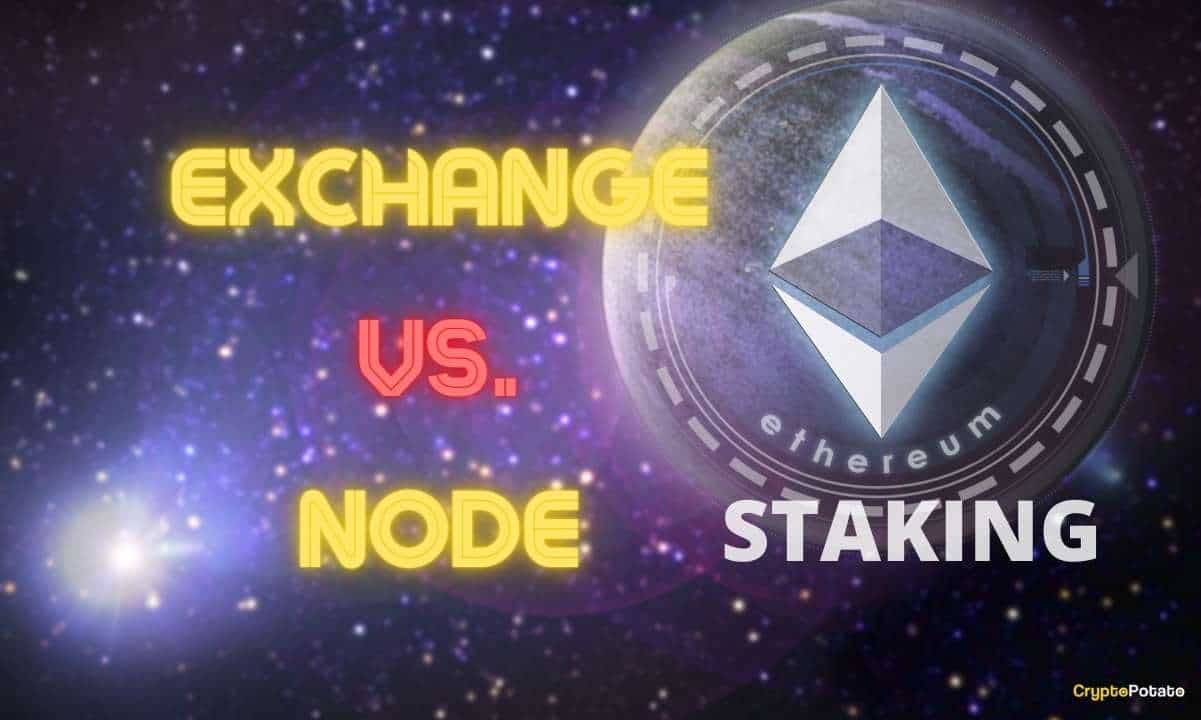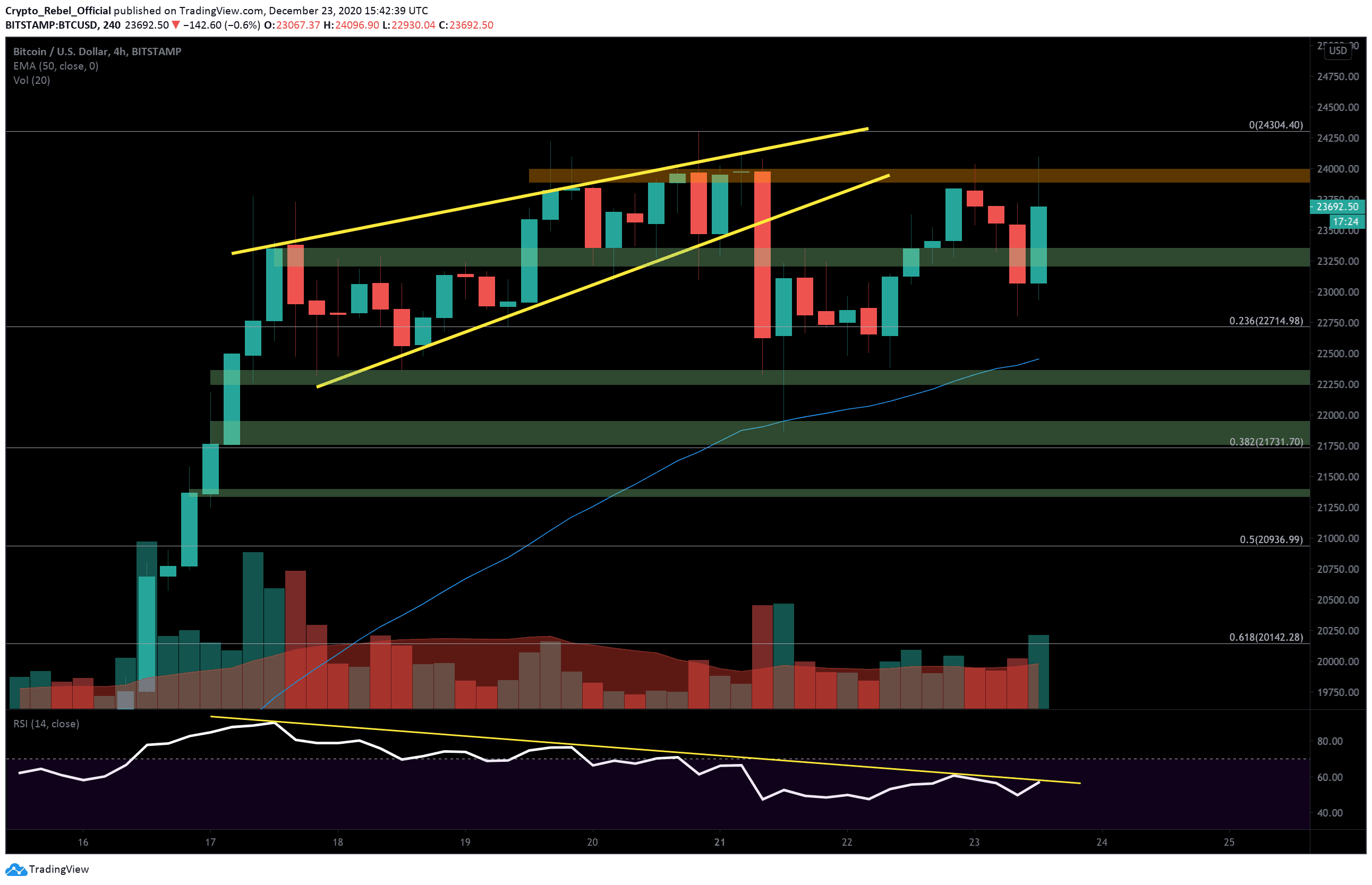Ethereum 2.0 Staking on Exchange vs. Creating Your Node: What You Need to Know
The Ethereum Network recently saw the official launch of the Beacon Chain, which is a stepping stone to the long-awaited Ethereum 2.0 upgrade, aiming to improve network speed, efficiency, and scalability. It’s a move by the Ethereum foundation to abandon the Proof of Work (PoW) consensus algorithm for the energy-efficient Proof of Stake (PoS) consensus algorithm. On top of that, we have to change terminology from having miners to having validators.
Ethereum 2.0 hopes to improve transaction processing speed to new heights, satisfying the demand of DeFi users.
The most significant change to facilitate improved transaction handling is the use of sharding technology. The term sharding comes from database terminology where we break up a single database into smaller parts that can be processed more quickly. In other words, not every node has to be a supercomputer capable of storing and searching terabytes of data. Even a small node can participate in the network and store a particular shard.
Of course, every shard is stored on multiple nodes to guarantee redundancy in case many nodes crash. We don’t want to lose a valuable piece of blockchain data because it happens that all nodes containing a particular piece of data fail.
Now, enough about ETH2.0 improvements. This upgrade gives crypto enthusiasts and investors a new opportunity to become part of the Ethereum Network through staking while earning ETH passively.
But what are your options? First of all, how does Ethereum 2.0 staking work?

Ethereum 2.0 Staking: Do You Have 32 ETH?
Staking is mandatory to secure a PoS-based blockchain. Ethereum requires every validator to stake a minimum of 32 ETH or more to run a validator node.
Validators who have staked 32 ETH or more with the Ethereum Network can validate transactions. For doing so, they will receive rewards that come from gas fees. At this point, it’s not clear yet what the expected APR will be for Ethereum staking. They added a rough estimate for the first year of Ethereum staking.
At this time, the exact size of an annual reward for Ethereum stakers is still unknown. However, according to the project roadmap, this value will vary between 1.56% and 18.1% and will be inversely proportional to the total number of validators: When the network increases, the rewards will contract.
Even though Ethereum promises an attractive reward ratio, there are obvious risks attached. The Ethereum 2.0 staking page puts an important disclaimer.
Although you can earn rewards for doing work that benefits the network, you can lose ETH for malicious actions, going offline, and failing to validate.
However, you can pool your resources by joining a staking pool. In this case, there’s no need to own the full amount of 32 Ether. If you only have one or two Ether, you can still join a staking pool.
The following section will give you a detailed breakdown of the pros and cons of using an exchange-based staking pool over running your validator node, staking 32 Ether.
Exchange-Based Staking: The Pros and Cons
Pros
- Hands-Off Approach
You don’t have to take care of the commitment of running and maintaining an Ethereum 2.0 node for years. Many things can happen in three years.
Some exchanges might allow you to withdraw your stake after a fixed period or even allow flexible staking. This functionality depends on the popularity of the feature.
- You Don’t Need 32 ETH
An obvious benefit is that you can participate in the process without committing the entire 32 ETH required to become a validator. This allows users with smaller investments to earn passively on their ETH without any further commitments.
You’re also not going to be concerned with any technicalities because everything you would need to do on most exchanges is stake your ETH without any further actions.

Cons
- Limited Control
You don’t have any control over how the exchange maintains the validator node(s). Anyone can make mistakes, even an exchange. It’s impossible to revert a slashing event. So, when an exchange-based node gets slashed, all exchange-based stakers are hurt.
However, the slashing event will likely be less harsh as the exchange can spread the slash over all of its pooled stakers. Perhaps, they can tap into a reserve pool to cover the loss.
- The Risk of a Halt
Additionally, an inherent risk of keeping your funds locked in an exchange is that of a potential hack or an attack by regulators, for example. If something happens to that exchange, your funds are also at risk.
- Potential Fees
Some exchanges charge fees to maintain a validator node. You may wonder why? Exchanges charge fees to cover their costs to maintain nodes. This added cost can remove some of your earnings from staking. Always check the details when picking an exchange.
Yet, most exchanges choose to distribute the full earnings to their users. Binance distributes 100% of on-chain staking income among its users. Kraken Eth2.0 staking, however, doesn’t mention any costs.
You can take a look at some of the most popular exchanges that support Ethereum 2.0 in our list here. Now, let’s have a look at the pros and cons of running a validator node on your own.
Running a Validator Node: Pros and Cons
While it might be more interesting to run your validator node to collect passive income from validating transactions, the risks are measurably higher.
Pros
Let’s also take a look at the pros.
- More control over your funds
You use your Ethereum wallet to stake the 32 ETH. In other words, the common phrase “Your wallet, your keys” applies here. When using an exchange-based staking pool, the exchange will still send your ETH to the Depositor contract that handles staking. It means that the exchange doesn’t hold the ETH in their wallets, as explained above.

- Earning full rewards
You earn the full rewards for your stake while running a validator node. Remember that you’ll have to spend some of your funds on maintenance, such as covering cloud costs when running a node with a cloud provider.
Cons
Here are the disadvantages of running your validator node.
- Not everyone has the required capital of 32 ETH.
- Technical Understanding is Necessary
Some technical know-how is required to run but also maintain a validator node. If done incorrectly, such as failing to validate transactions or going offline, you can lose part of your stake. This event is called slashing, a well-known concept among the Cosmos and Polkadot community. This mechanism incentivizes validators to act honestly and maintain their nodes correctly.
- Indefinite Lockup Period
Your staked Ether will be locked up for an indefinite period. It’s not possible to use this locked ETH in any of the existing DeFi protocols. The sole purpose of your stake is to secure the Ethereum Network.
Here, it’s important to note that your ETH will also be locked indefinitely if you choose to use an exchange to stake. However, most exchanges mint a synthetic token in a 1:1 peg with the ETH you stake. This token is then listed for trading. You will be receiving your rewards based on the number of synthetic tokens you own, but if you decide that you don’t want to go on with staking, you can sell it and use the capital for something else.
Conclusion: Which Option is Best?
As with many areas of cryptocurrency, a core decision is whether to give up your control over assets. In the end, exchange-based staking still sends your funds to the Depositor contract. However, you put your trust with an exchange to maintain a validator node correctly.
Remember that both staking options are subject to Ethereum’s volatility. It’s impossible to withdraw funds if Ethereum’s price experiences extreme volatility. Therefore, it’s a big commitment to stake with the Ethereum Network.
However, the underlying goal is fascinating. With the right amount of stakers, Ethereum 2.0 has the potential to reach 100,000 transactions per second. And you can become part of the network to realize this ambitious goal of becoming a “world computer.”
Yet, Ethereum 2.0 staking offers better rates than centralized finance. On top of that, if you choose the exchange-based staking option, you will also get a synthetic asset. This opens up new ways to experiment with DeFi.
In short, if you don’t have the technical know-how or don’t have 32 ETH to commit long-term, it’s probably better to opt for an exchange-based staking option.








